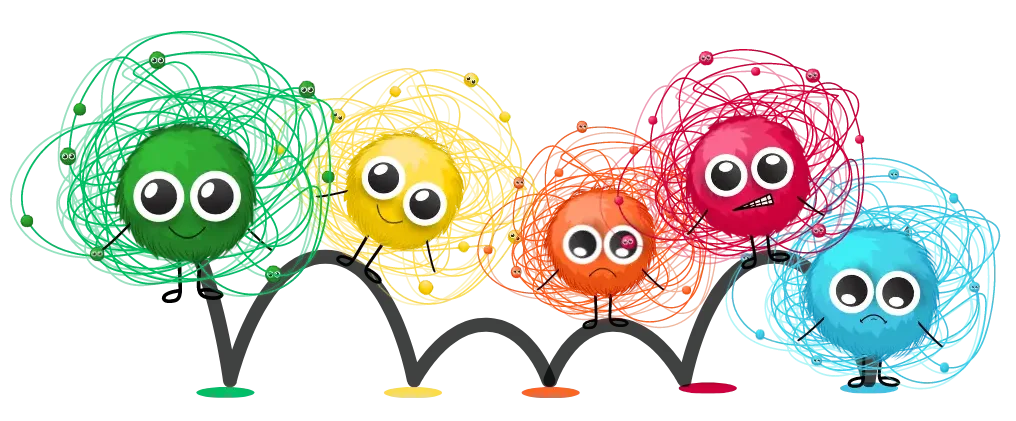The BOUNCE framework is highly effective in supporting emotionally dysregulated children because it integrates several evidence-based, research-backed models that comprehensively address the complex needs of these children.
Holistic Understanding of the Child’s Needs
- BOUNCE covers multiple dimensions critical to a child’s emotional well-being: nervous system regulation, attachment, sensory processing, emotional regulation, social connections, and self-esteem. By addressing these interconnected areas, it ensures a comprehensive approach, making sure that all factors contributing to emotional dysregulation are considered.
Grounded in Neuroscience and Developmental Theories
- Nervous System (Polyvagal Theory and Bruce Perry’s Hand Model): BOUNCE incorporates Polyvagal Theory, which explains how the autonomic nervous system influences emotional regulation and social engagement. It also uses Dr. Bruce Perry’s Hand Model of the brain, which provides a simple, accessible way for children to understand how their brain functions under stress, illustrating the fight, flight, and freeze responses.
- Attachment (Attachment Theory): The framework is rooted in Attachment Theory by John Bowlby and Mary Ainsworth, which highlights how early relationships with caregivers shape a child’s ability to regulate emotions and form secure connections with others.
- Sensory Processing (Sensory Integration Theory): BOUNCE leverages Sensory Integration Theory by Jean Ayres to understand how a child’s sensory profile impacts their behaviour and emotional responses, making it possible to tailor interventions that address specific sensory needs.
Personalised Interventions
- BOUNCE is designed to identify the highest area of need for each child, whether it’s related to their sensory processing, attachment style, or emotional regulation. This ensures that interventions are personalised, increasing their effectiveness. For example, a child with significant sensory challenges may benefit from interventions based on Sensory Integration Theory, while a child with attachment issues might need strategies grounded in Attachment Theory.
Focus on Building Self-Esteem and Confidence
- Self-Esteem: BOUNCE emphasises building self-esteem through frameworks like Self-Determination Theory and Mindset Theory by Carol Dweck. By fostering a growth mindset and meeting psychological needs for autonomy, competence, and relatedness, BOUNCE helps children develop a strong sense of self and confidence in their abilities.
Promotes Emotional Awareness and Understanding
- Emotional Regulation: BOUNCE educates children on their brain and nervous system, drawing on Polyvagal Theory and the Window of Tolerance model, which help them understand their emotional triggers and how to stay within a regulated state. Dialectical Behaviour Therapy (DBT) techniques are also used to teach children skills for managing intense emotions and staying grounded.
Strengthening Social Connections
- Social Connections: The framework emphasises the importance of social connections through Theory of Mind, Neurodivergent Affirming Models, and Social Learning. These approaches help children develop a greater understanding of perspectives and begin to learn social skills, which are crucial for healthy emotional development and reducing dysregulation.
Research-Based and Evidence-Driven
- BOUNCE integrates these evidence-based models, ensuring that the strategies and interventions used are scientifically validated. This builds confidence in caregivers and professionals that the framework will lead to positive, sustainable outcomes.
What Makes BOUNCE Different to Other Approaches?
Integration of Multiple Evidence-Based Models
- Comprehensive and Multidimensional: Unlike many approaches that focus on a single aspect of emotional dysregulation, BOUNCE integrates multiple research-based models, addressing nervous system regulation, attachment, sensory processing, emotional regulation, social connections, and self-esteem. This holistic approach ensures that all factors contributing to a child’s emotional state are considered and addressed simultaneously.
Personalised and Targeted Interventions
- Highest Area of Need Focus: BOUNCE prioritises the child’s most pressing area of need, allowing for targeted interventions that are personalised to each child’s unique profile. This ensures that the support provided is not only relevant but also more effective in bringing about change. Other approaches might use a one-size-fits-all strategy, whereas BOUNCE tailors its interventions to the individual child.
Empowerment through Neuroscience Education
- Child-Friendly Neuroscience: BOUNCE uniquely empowers children by educating them about their own brain and nervous system. By incorporating models like Bruce Perry’s Hand Model of the brain, BOUNCE makes complex neuroscience accessible to children, helping them understand and manage their own emotions. This level of self-awareness and understanding is rare in other approaches, which may not emphasize this educational component.
Balanced Focus on Both the Internal and External Environment
- Internal and External Focus: BOUNCE balances the internal regulation of emotions (through understanding the nervous system, emotional regulation, and self-esteem) with the external environment (through attachment, social connections, and sensory processing). This dual focus helps children not only manage their emotions internally but also navigate and improve their relationships and interactions with the world around them.
Research-Driven and Systematic Approach
- Evidence-Based and Research-Driven: BOUNCE is firmly grounded in research, drawing from established theories like Polyvagal Theory, Attachment Theory, Sensory Integration, and more. This scientific foundation ensures that the interventions and strategies used are effective and validated by research. Additionally, the systematic nature of BOUNCE, with its clear steps and focused areas, provides a structured pathway to sustainable emotional development, unlike more generalised or less defined approaches.
Sustainable Change and Long-Term Impact
- Focus on Sustainable Change: BOUNCE is designed not just to manage symptoms temporarily but to create lasting change by building self-confidence, self-esteem, and resilience. By addressing root causes and providing tools for long-term emotional regulation, BOUNCE helps children achieve sustainable emotional well-being, setting it apart from approaches that may offer only short-term solutions.
Collaborative and Inclusive Approach
- Involvement of Caregivers and Professionals: BOUNCE encourages collaboration between children, caregivers, and professionals, ensuring that everyone involved in the child’s life is on the same page. This inclusive approach fosters a supportive environment for the child, promoting consistency and reinforcement of the strategies learned, which is not always emphasized in other frameworks.
Developmentally Appropriate
- Child-Centric and Developmentally Appropriate: BOUNCE is tailored to the developmental stage of each child, ensuring that the interventions are age-appropriate and resonate with the child’s level of understanding. This child-centric focus ensures that the strategies are not only effective but also engaging and accessible to children, which can be a limitation in more adult-centric or generic approaches.
Next Steps
Step 1: Identify the need of the dysregulation – is it attachment, sensory, emotional, social connection, or self-esteem?
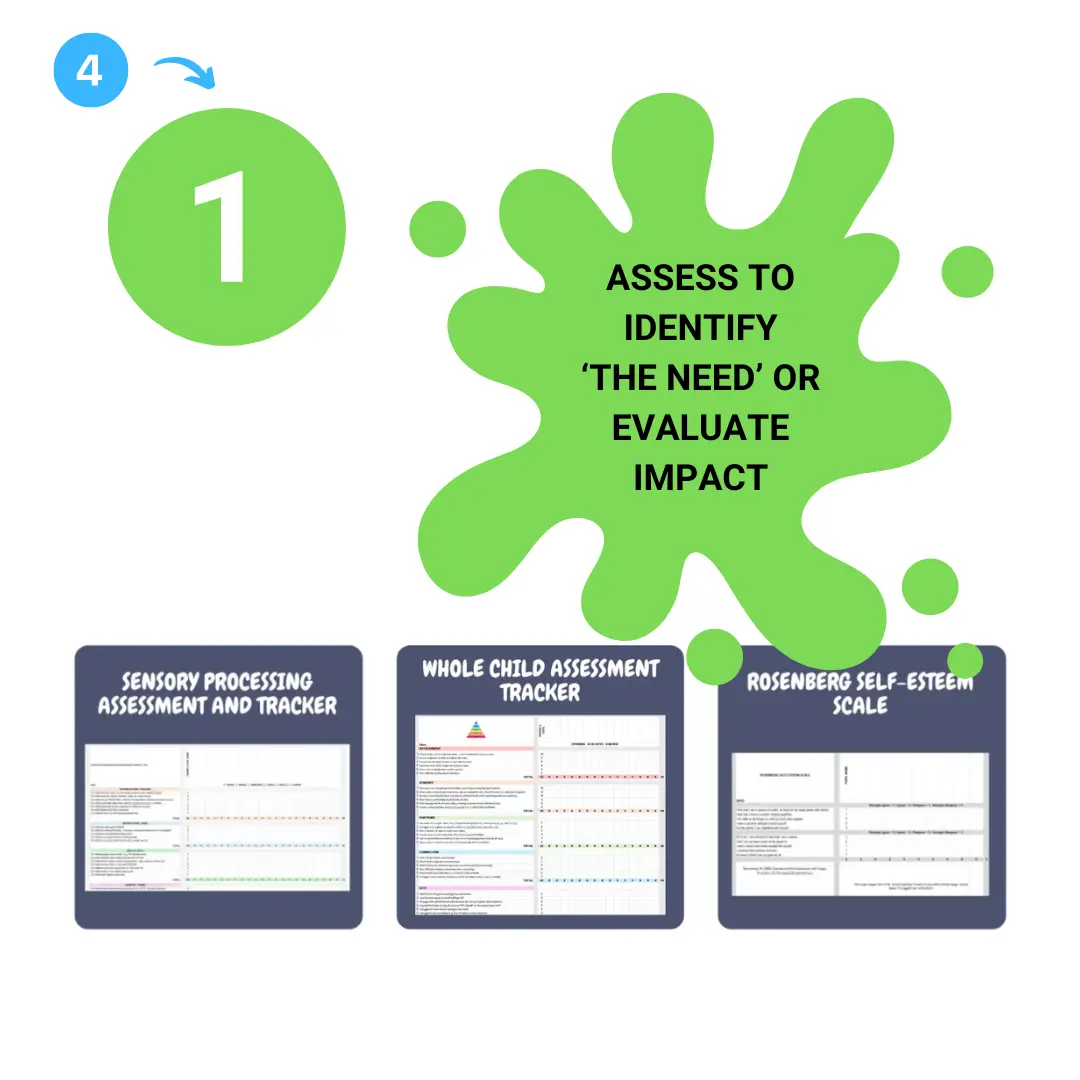
Step 2: Once you have ascertained the area of need – the starting point – create a support plan to meet that need.
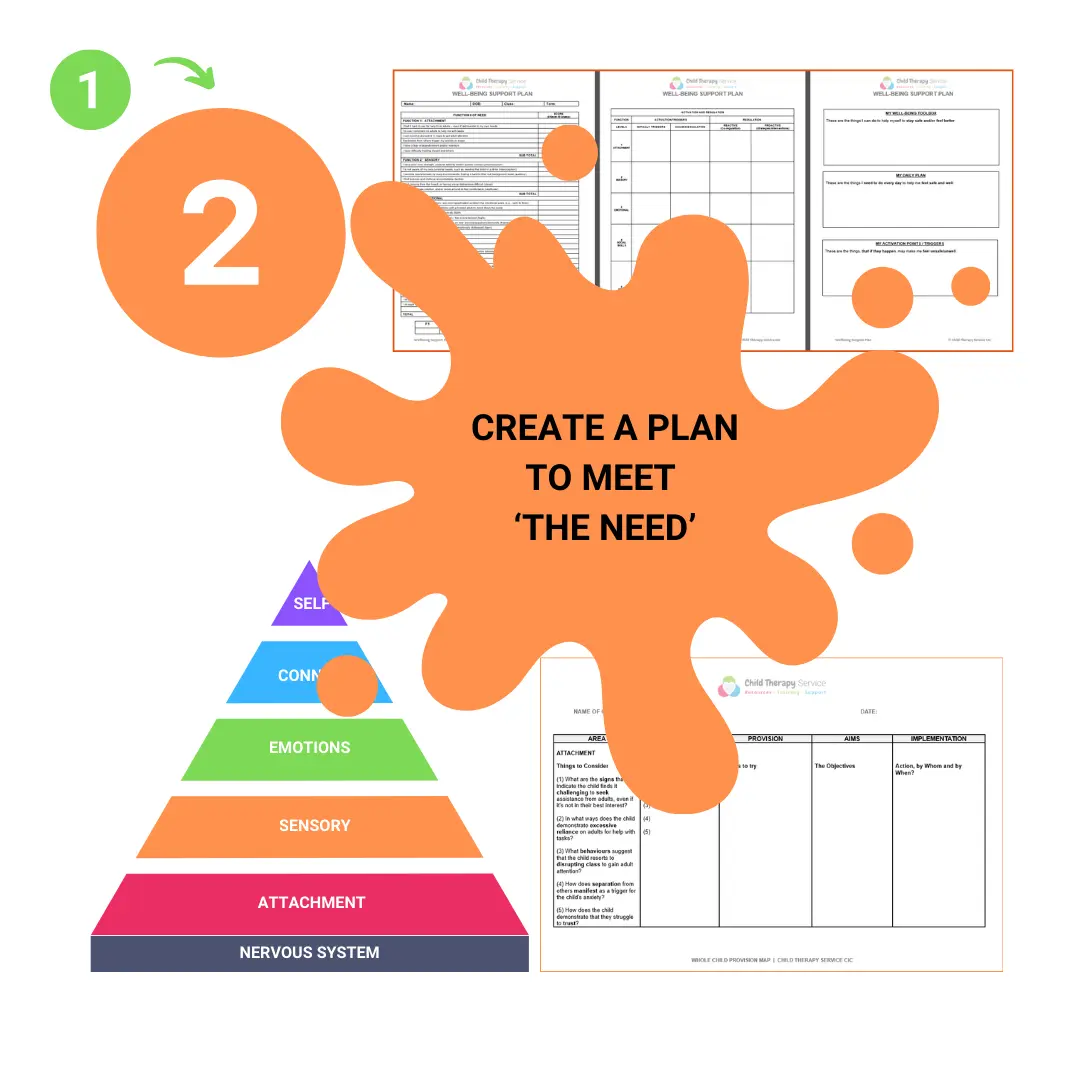
Step 3: At this point, you have assessed the unmet need and created a support plan, now it’s looking at implementing the plan, using resources, interventions, curriculum ideas and strategies.
- View Resources
- View Live Interventions
- View On Demand Interventions
- View All Interventions
- View Curriculum
- View Strategies
Looking for greater understanding? Then take a look through our courses.
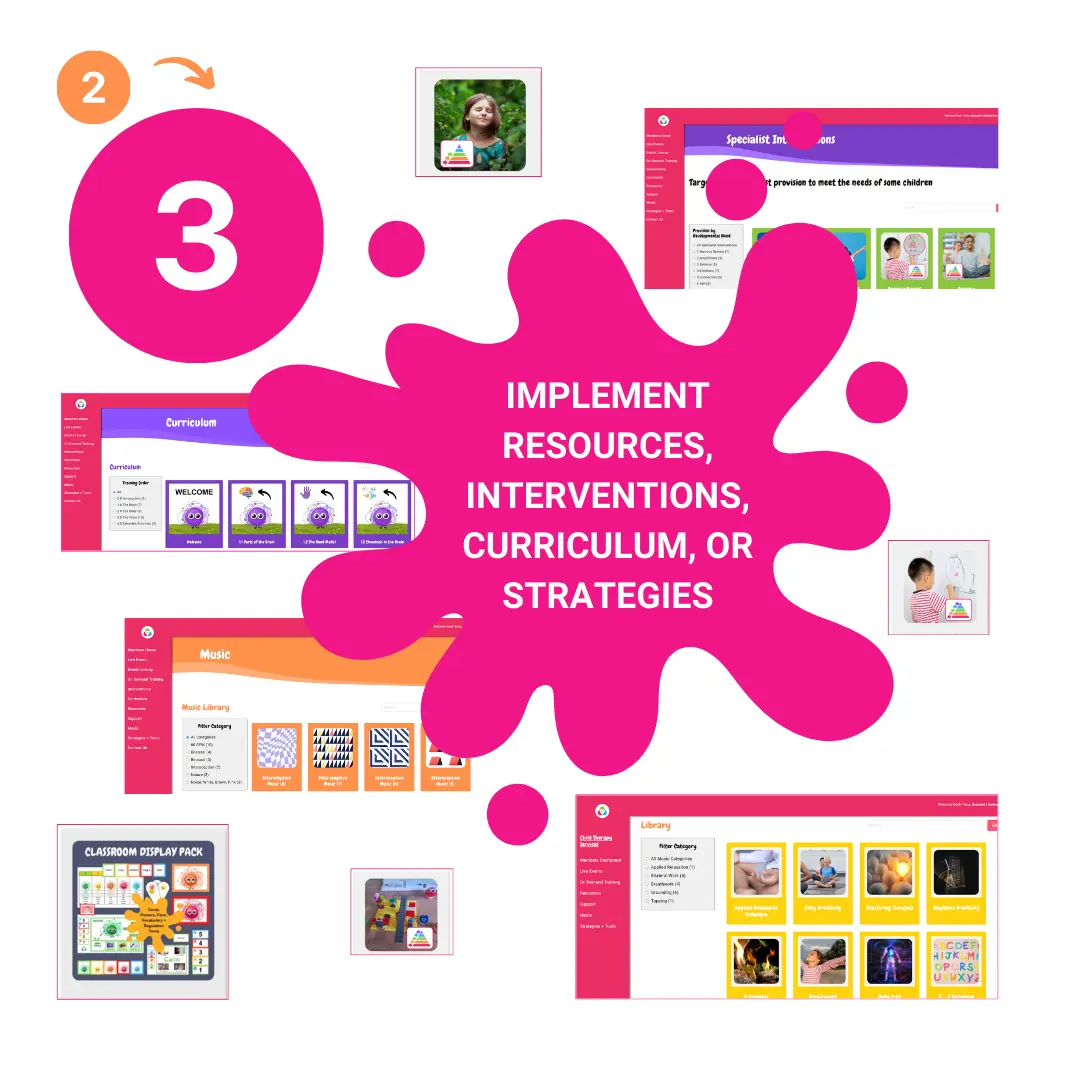
Step 4: Sometimes we need further support, guidance, and a helping hand. This is why we also provide access to support systems of coaching, supervision, and monthly chats.
- Child/Young Person Coaching
- Parent/Carer Coaching
- Family Coaching
- Professional Supervision
- Outreach
- Q+A Session
- Coffee Morning
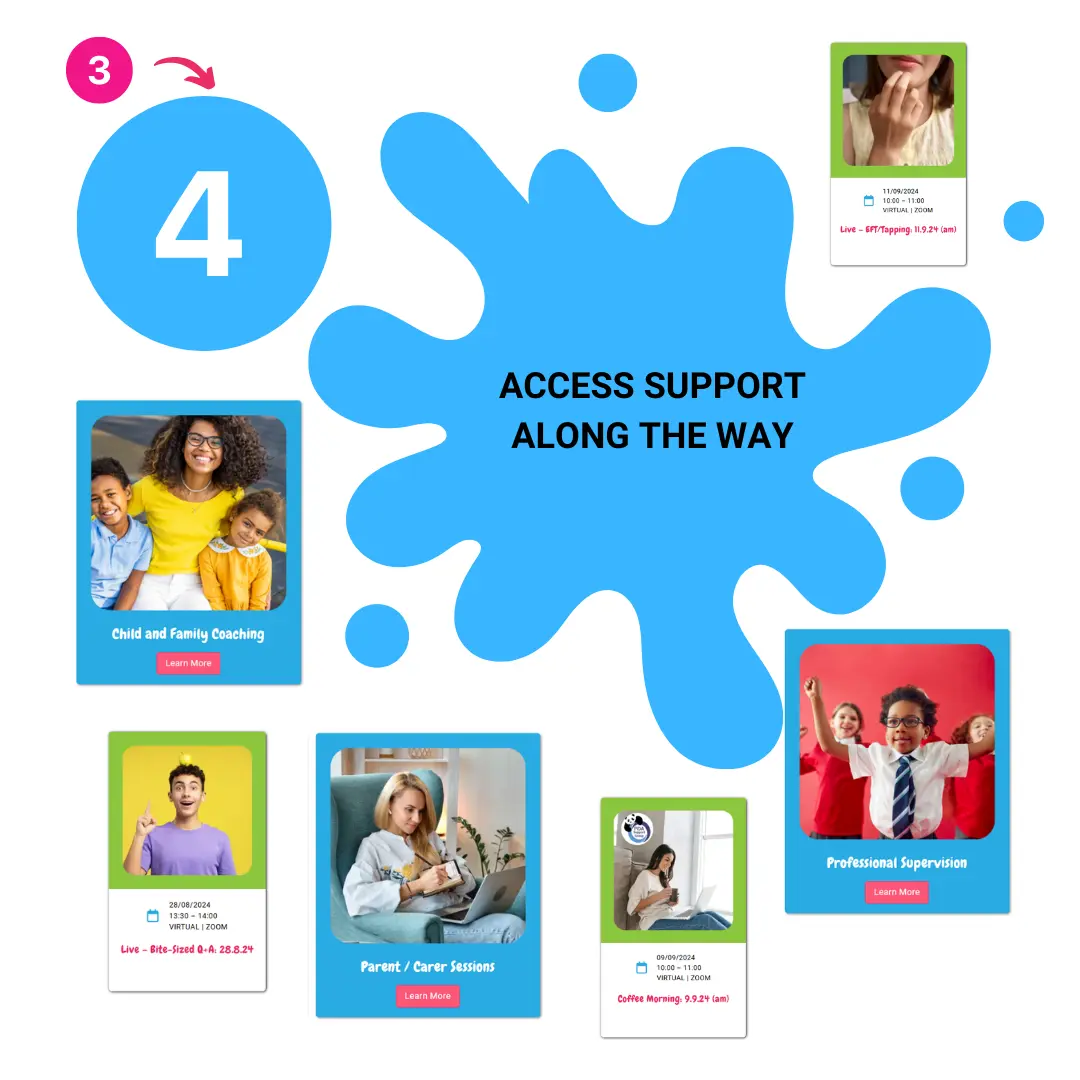
Other Useful Links
- Parents and Carers take a look at BOUNCE@HOME
- Professionals take a look at BOUNCE@GROUPS
